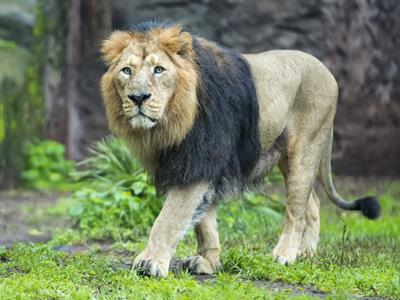
PUMPA - SMART LEARNING
எங்கள் ஆசிரியர்களுடன் 1-ஆன்-1 ஆலோசனை நேரத்தைப் பெறுங்கள். டாப்பர் ஆவதற்கு நாங்கள் பயிற்சி அளிப்போம்
Book Free DemoIf ever you should go by chance
To jungles in the east;
And if there should to you advance
A large and tawny beast,
If he roars at you as you’re dyin’
You’ll know it is the Asian Lion...
Or if some time when roaming round,
A noble wild beast greets you,
With black stripes on a yellow ground,
Just notice if he eats you.
This simple rule may help you learn
The Bengal Tiger to discern.
A noble wild beast greets you,
With black stripes on a yellow ground,
Just notice if he eats you.
This simple rule may help you learn
The Bengal Tiger to discern.
Explanation:
The poem 'How to Tell Wild Animals' introduces various wild animals to the readers. The poet talks about each animal in a very sarcastic way. Wild animals are general predators, and concepts such as death and killing can be traumatic when expressed openly. But the readers can't but help but be amused by the hilarious yet factual representation of each animal.
The first stanza introduces the Asiatic Lion. The poet subtly seems to say that the wild animals do not enter the human territory unnecessarily, rather it is the other way round. She addresses the readers and says that they can get introduced to the lion only if they visit his place by chance. The lion resides in the jungles of the east. Asiatic Lions, in the present world, are an endangered species, meaning that their population is nearing extinction. They are found today only in India. The Gir National Park in Gujarat preserves the only fewer lions that are remaining. Wells being a westerner, says that the lions are found in the East, which is India. The poet says that if the readers see a large and tawny beast advancing towards them in a hurry, then they need not doubt about the identity of the animal, as they can confirm it to be the Asiatic lion. The poet also says that the lion will make sure that the person is dead and will roar as they slowly lay there dying. It is a sarcastic remark, as there is not much use to knowing the animal in the final moments of one's life.

Asiatic Lion advancing
The poet says that if, by any chance, the readers escape the lion and show the audacity to roam around the jungle, they might come across the noble beast of the jungle. The poet is referring to the tiger, who is considered to be an animal of royalty and nobility. The poet describes the tiger as having black stripes on a yellow ground. She calls the body of the tiger a ground, signifying its massive appearance. The poet, as if casually, advises the readers to check if the tiger is eating them, indicating that the tiger might attack in the blink of an eye. She also says that this is a simple hack to distinguish and identify the rest of the animals from the Bengal Tiger. The Bengal Tiger is another species that is slowly becoming endangered. They are found predominantly in India and in some parts of Pakistan, Nepal, Bangladesh and Tibet.

Bengal Tiger
Words with difficult meanings:
| S.no | Words | Meaning |
1 | Jungle | Wild forests |
2 | Advance | To walk towards, come forward |
3 | Tawny | Yellowish brown |
4 | Noble | Showing class |
5 | Discern | To identify or distinguish |
6 | Hilarious | Extremely funny |
7 | Sarcastic | A serious concept narrated in a mocking tone |
8 | Endangered | Animals that are in danger of getting disappeared |
9 | Extinct | Animals that are no longer available |
10 | Traumatic | Bad memories that haunt |
11 | Audacity | The courage or will that one shows |
Reference:
National Council of Educational Research and Training (2006). Beehive. How to Tell Wild Animals- Carolyn Wells (pp. 43-45). Published at the Publication Division by the Secretary, National Council of Educational Research and Training, Sri Aurobindo Marg, New Delhi.